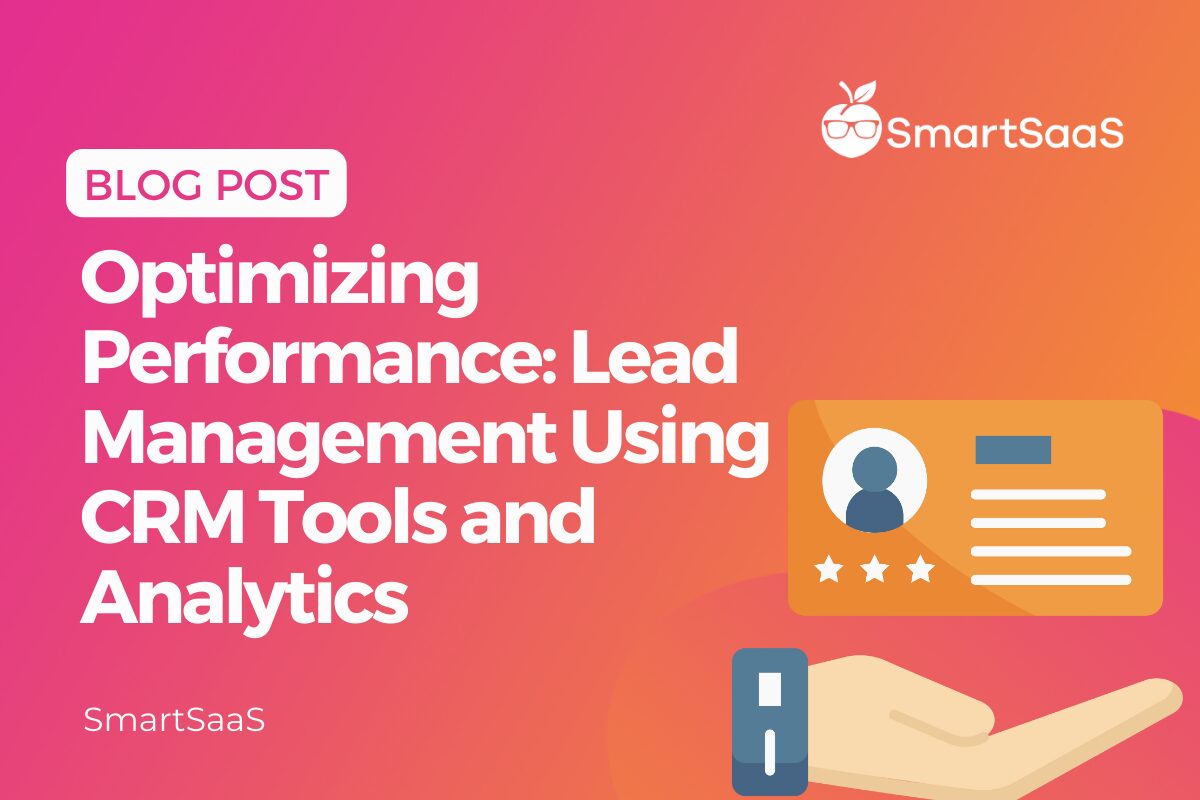
Unlocking Growth: The Ultimate Guide to CRM Marketing Campaigns
In today’s hyper-competitive business landscape, simply having a great product or service isn’t enough. You need to connect with your audience, understand their needs, and nurture those relationships over time. That’s where CRM marketing campaigns come in. They’re the engine that drives customer engagement, fuels conversions, and ultimately, boosts your bottom line. This comprehensive guide will delve deep into the world of CRM marketing campaigns, providing you with the knowledge and strategies you need to create campaigns that resonate with your audience and deliver tangible results.
What is CRM and Why Does it Matter for Marketing?
Before we dive into the specifics of CRM marketing campaigns, let’s clarify what CRM actually is. CRM stands for Customer Relationship Management. At its core, CRM is a strategy for managing all your company’s interactions with current and potential customers. It involves using technology to organize, automate, and synchronize sales, marketing, customer service, and technical support. A CRM system serves as a centralized hub for all customer data, providing a 360-degree view of each customer’s journey.
Why is CRM so crucial for marketing? Because it empowers you to:
- Personalize your marketing efforts: With detailed customer data at your fingertips, you can tailor your messaging to individual preferences and behaviors.
- Improve customer segmentation: Segment your audience based on demographics, purchase history, engagement levels, and more, allowing you to target specific groups with relevant offers.
- Automate marketing processes: Automate repetitive tasks like email marketing, lead nurturing, and social media posting, freeing up your time to focus on strategic initiatives.
- Track and measure campaign performance: CRM systems provide valuable insights into your campaign’s effectiveness, allowing you to make data-driven decisions and optimize your strategies.
- Enhance customer loyalty: By providing exceptional customer experiences, you can build stronger relationships and foster long-term loyalty.
Building Blocks of a Successful CRM Marketing Campaign
Creating a successful CRM marketing campaign requires careful planning and execution. Here are the essential building blocks:
1. Define Your Goals and Objectives
What do you want to achieve with your CRM marketing campaign? Increase sales? Generate leads? Improve customer retention? Clearly defining your goals is the first step. Make sure your goals are SMART: Specific, Measurable, Achievable, Relevant, and Time-bound. For example, instead of saying “increase sales,” set a goal like “Increase sales by 15% within the next quarter.”
2. Understand Your Target Audience
Who are you trying to reach? Develop detailed customer personas that represent your ideal customers. Consider their demographics, psychographics, behaviors, and pain points. The more you understand your audience, the better you can tailor your messaging and offers to resonate with them. Conduct market research, analyze customer data, and gather feedback to gain a deeper understanding of your target audience.
3. Segment Your Customer Database
Don’t treat all your customers the same. Segment your customer database based on relevant criteria, such as:
- Demographics: Age, gender, location, income, education, etc.
- Purchase history: Products purchased, frequency of purchases, average order value, etc.
- Engagement levels: Website activity, email opens and clicks, social media interactions, etc.
- Customer lifecycle stage: New leads, prospects, customers, loyal customers, churned customers, etc.
Segmentation allows you to deliver targeted messages and offers that are more likely to convert.
4. Choose the Right CRM Software
Selecting the right CRM software is critical for the success of your campaigns. Consider your business needs, budget, and technical expertise. Some popular CRM platforms include:
- Salesforce: A comprehensive CRM platform with a wide range of features and integrations.
- HubSpot CRM: A user-friendly CRM that’s ideal for small to medium-sized businesses, with robust marketing automation features.
- Zoho CRM: A cost-effective CRM solution with a variety of features and integrations.
- Microsoft Dynamics 365: A powerful CRM platform that integrates with other Microsoft products.
- Pipedrive: A sales-focused CRM designed to help businesses manage their sales pipeline.
When choosing a CRM, consider factors like ease of use, scalability, integration capabilities, reporting features, and pricing.
5. Develop Compelling Content
Your content is the heart of your CRM marketing campaigns. Create high-quality, engaging content that resonates with your target audience. This includes:
- Email marketing: Craft personalized email campaigns to nurture leads, promote products, and provide valuable information.
- Landing pages: Create dedicated landing pages for your campaigns to capture leads and drive conversions.
- Website content: Optimize your website content to attract and engage visitors.
- Social media posts: Share valuable content and engage with your audience on social media platforms.
- Blog posts: Create informative blog posts that address your audience’s pain points and provide solutions.
Make sure your content is relevant, valuable, and aligned with your target audience’s needs and interests.
6. Automate Your Marketing Processes
Marketing automation is key to scaling your CRM marketing campaigns. Use your CRM software to automate repetitive tasks, such as:
- Email marketing: Set up automated email sequences to nurture leads and onboard new customers.
- Lead nurturing: Create automated workflows to guide leads through the sales funnel.
- Social media posting: Schedule social media posts to maintain a consistent presence.
- Task management: Automate tasks for sales reps, such as sending follow-up emails and scheduling appointments.
Automation frees up your time to focus on more strategic initiatives.
7. Track and Analyze Your Results
Regularly track and analyze the performance of your CRM marketing campaigns. Use your CRM software’s reporting features to monitor key metrics, such as:
- Open rates: The percentage of emails opened by recipients.
- Click-through rates: The percentage of recipients who click on links in your emails.
- Conversion rates: The percentage of leads or customers who take a desired action, such as making a purchase.
- Customer acquisition cost (CAC): The cost of acquiring a new customer.
- Customer lifetime value (CLTV): The predicted revenue a customer will generate over their relationship with your business.
Use these insights to optimize your campaigns and improve your results.
8. Continuously Optimize and Refine
CRM marketing is an ongoing process. Continuously monitor your campaign performance, analyze your results, and make adjustments as needed. Experiment with different strategies, content, and offers to find what works best for your audience. Regularly review your customer data and update your customer personas to ensure they reflect your current target audience.
Types of CRM Marketing Campaigns
There are many different types of CRM marketing campaigns you can implement, each with its own specific goals and strategies. Here are some examples:
1. Lead Nurturing Campaigns
Lead nurturing campaigns are designed to nurture leads through the sales funnel, providing them with valuable information and building trust. These campaigns typically involve a series of automated emails, content offers, and other touchpoints designed to move leads closer to a purchase. Key components include:
- Welcome emails: Introduce your brand and provide a warm welcome to new leads.
- Educational content: Share informative blog posts, ebooks, and webinars that address your audience’s pain points.
- Product demos: Offer product demos to showcase the value of your products or services.
- Special offers: Provide exclusive discounts and promotions to encourage leads to convert.
2. Customer Onboarding Campaigns
Customer onboarding campaigns are designed to welcome new customers and help them get started with your product or service. These campaigns typically involve a series of emails, tutorials, and support resources that guide customers through the initial setup process. Key components include:
- Welcome emails: Welcome new customers and provide instructions on how to get started.
- Product tutorials: Offer product tutorials to help customers learn how to use your product or service.
- Support resources: Provide access to FAQs, knowledge bases, and customer support.
- Feedback requests: Request feedback from new customers to identify areas for improvement.
3. Customer Retention Campaigns
Customer retention campaigns are designed to keep existing customers engaged and loyal. These campaigns typically involve a series of emails, exclusive offers, and personalized content that rewards customer loyalty. Key components include:
- Loyalty programs: Offer loyalty programs to reward repeat customers.
- Exclusive offers: Provide exclusive discounts and promotions to loyal customers.
- Personalized recommendations: Recommend products or services based on customers’ past purchases.
- Customer feedback: Request feedback from customers to identify areas for improvement.
4. Re-engagement Campaigns
Re-engagement campaigns are designed to re-engage customers who have become inactive. These campaigns typically involve a series of emails, special offers, and personalized content that encourages customers to return. Key components include:
- Win-back emails: Send win-back emails to customers who haven’t made a purchase in a while.
- Exclusive offers: Provide exclusive discounts and promotions to encourage customers to return.
- Personalized recommendations: Recommend products or services based on customers’ past purchases.
- Surveys: Conduct surveys to understand why customers have become inactive.
5. Cross-selling and Upselling Campaigns
Cross-selling and upselling campaigns are designed to increase revenue by encouraging customers to purchase additional products or services. These campaigns typically involve personalized recommendations based on customers’ past purchases. Key components include:
- Product recommendations: Recommend related products based on customers’ past purchases.
- Upselling offers: Offer higher-priced products or services that provide more value.
- Bundling offers: Offer bundled products or services at a discounted price.
- Personalized emails: Send personalized emails that highlight relevant products or services.
Best Practices for CRM Marketing Campaigns
To maximize the effectiveness of your CRM marketing campaigns, follow these best practices:
- Personalize your messaging: Use customer data to personalize your emails, offers, and content.
- Segment your audience: Segment your customer database to deliver targeted messages and offers.
- Automate your processes: Use marketing automation to streamline your workflows and save time.
- Test and optimize your campaigns: Regularly test different strategies, content, and offers to find what works best.
- Measure your results: Track and analyze your campaign performance to identify areas for improvement.
- Focus on customer experience: Provide exceptional customer experiences to build stronger relationships.
- Keep your data clean and updated: Regularly clean and update your customer data to ensure accuracy.
- Integrate your CRM with other tools: Integrate your CRM with other tools, such as email marketing platforms, social media platforms, and e-commerce platforms, to streamline your workflows.
- Comply with data privacy regulations: Ensure that your CRM marketing campaigns comply with data privacy regulations, such as GDPR and CCPA.
- Stay up-to-date with the latest trends: Stay up-to-date with the latest CRM marketing trends and technologies to ensure that your campaigns are effective.
Measuring the Success of Your CRM Marketing Campaigns
Measuring the success of your CRM marketing campaigns is crucial for understanding what’s working and what needs improvement. Here are some key metrics to track:
- Conversion rates: The percentage of leads or customers who take a desired action (e.g., making a purchase, signing up for a demo).
- Click-through rates (CTR): The percentage of recipients who click on links in your emails or other marketing materials.
- Open rates: The percentage of recipients who open your emails.
- Customer acquisition cost (CAC): The cost of acquiring a new customer.
- Customer lifetime value (CLTV): The predicted revenue a customer will generate over their relationship with your business.
- Return on investment (ROI): The profitability of your marketing campaigns.
- Lead generation: The number of leads generated by your campaigns.
- Website traffic: The amount of traffic driven to your website by your campaigns.
- Social media engagement: The level of engagement on your social media channels.
By tracking these metrics, you can gain valuable insights into the performance of your campaigns and make data-driven decisions to improve your results. Use your CRM platform’s reporting features to generate reports and analyze your data. Regularly review your key performance indicators (KPIs) to identify areas for improvement.
Challenges in CRM Marketing Campaigns and How to Overcome Them
While CRM marketing campaigns offer significant benefits, there are also challenges that you may encounter. Here are some common challenges and how to overcome them:
- Data quality issues: Inaccurate or incomplete customer data can undermine your marketing efforts. To overcome this, implement data cleansing processes, validate data regularly, and encourage customers to update their information.
- Lack of personalization: Generic messaging can fail to resonate with your audience. Use customer data to personalize your emails, offers, and content. Segment your audience and tailor your messaging to specific segments.
- Poor segmentation: Ineffective segmentation can lead to irrelevant messaging. Review your segmentation strategy regularly and refine it based on customer behavior and feedback. Use a variety of segmentation criteria, such as demographics, purchase history, and engagement levels.
- Lack of automation: Manual marketing processes can be time-consuming and inefficient. Use marketing automation tools to automate repetitive tasks, such as email marketing, lead nurturing, and social media posting.
- Integration issues: Integrating your CRM with other marketing tools can be challenging. Choose a CRM platform that integrates well with your existing tools and consider using a third-party integration platform.
- Measuring ROI: It can be difficult to accurately measure the ROI of your marketing campaigns. Track key metrics, such as conversion rates, customer acquisition cost, and customer lifetime value. Use attribution modeling to understand which marketing channels are driving the most conversions.
- Staying up-to-date: The marketing landscape is constantly evolving. Stay up-to-date with the latest trends and technologies by reading industry publications, attending webinars, and networking with other marketers.
The Future of CRM Marketing Campaigns
The future of CRM marketing campaigns is bright, with exciting developments on the horizon. Here are some trends to watch:
- Artificial intelligence (AI): AI will continue to transform CRM marketing, enabling more personalized experiences, automated decision-making, and predictive analytics.
- Hyper-personalization: Marketers will increasingly focus on hyper-personalization, tailoring messaging and offers to individual customer preferences and behaviors.
- Omnichannel marketing: Customers will expect seamless experiences across all channels, including email, social media, and mobile.
- Data privacy and security: Data privacy and security will become even more important, with businesses needing to prioritize compliance with data privacy regulations.
- Marketing automation: Marketing automation will become more sophisticated, enabling marketers to automate complex workflows and personalize customer journeys.
- Voice search: Voice search will become more prevalent, requiring marketers to optimize their content for voice search.
By embracing these trends, you can stay ahead of the curve and create CRM marketing campaigns that deliver exceptional results. The key is to be adaptable, embrace new technologies, and always put the customer first.
Conclusion
CRM marketing campaigns are a powerful tool for businesses looking to build stronger customer relationships, drive conversions, and achieve sustainable growth. By understanding the building blocks of a successful campaign, leveraging the right CRM software, and following best practices, you can create campaigns that resonate with your target audience and deliver tangible results.
Remember to continuously track and analyze your results, optimize your strategies, and stay up-to-date with the latest trends. With a strategic approach, you can harness the power of CRM marketing to unlock your business’s full potential. Embrace the opportunities that CRM marketing offers, and watch your business thrive.


